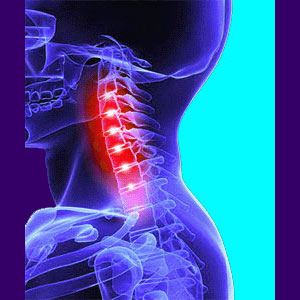
Degenerative disc disease symptoms are a very controversial topic in the back pain therapy industry. Most enlightened doctors do not even subscribe to the diagnosis of degenerative disc disease as a pathological entity, since they understand the universality and normality of the condition, especially in the lumbar and cervical spinal regions.
Other doctors make a good portion of their money treating diagnosed patients and are not keen on the idea that DDD is mostly a completely asymptomatic spinal condition. Too bad this is not a subjective topic. Unless the degenerative changes are extreme, there is slim chance that chronic symptoms will ever be sourced by expected mild to moderate spinal aging. This has been proven definitively in research and is reflected in the most up-to-date diagnostic guidelines offered by most major medical associations.
This dialog focuses on possible back and neck symptoms that might be caused by spinal disc deterioration and why most degenerative disc disease profiles are illogically diagnosed as sources of pain.
Normal Disc Disease Symptoms
Typical intervertebral discs will degenerate as they age. This means that the discs will lose height and their ability to retain moisture. Progressive disc dehydration leads to a steady decrease in the size and mass of the disc. This allows the vertebrae to come closer together, making the person slightly shorter, year by year.
DDD can be easily seen on MRI or even x-ray testing. It is not uncommon for significant disc degeneration to make a given intervertebral level look as if it has disappeared altogether. However, regardless of the frightening appearance of this condition, it is clear from the clinical evidence that degenerative disc disease is mostly a benign condition and is usually coincidental to any back pain that is experienced.
Advanced Degenerative Disc Disease Symptoms
Extreme disc degeneration is the gross exception to the rule. There are some unfortunate people who endure very high degrees of disc deterioration, due to severe traumatic back injury or idiopathic reasons. Although many of these extreme cases are also asymptomatic, some patients may experience some moderate to severe disc pain due to these dire spinal circumstances. Let it be known that these extreme cases represent less than 2% of all diagnosed patients, so chances are your DDD is not as grim as it may seem.
The worst cases of DDD can actually compromise the integrity of the spinal column and create spinal instability in a tiny percentage of patients. In these cases, treatment is typically necessary and may even involve surgical intervention.
Opinions on Degenerative Disc Disease Symptoms
More than 98% of you reading this article should not be feeling any pain from your DDD. Most likely, if you do have back or neck pain, it is coincidental to the normal disc degeneration that we all share. Remember disc deterioration is inherent to our species and we all have it to some degree.
I was diagnosed at age 16 as having advanced DDD which was blamed for my horrible pain. I know how scary the diagnosis can be and the powerful nocebo effect it can impart.
It is crucial to learn the facts about disc degeneration and possibly even to implement a program of knowledge therapy to repudiate the structural implications of this mostly innocent condition.
As a final note, all you care providers who take advantage of the ignorance of your patients by enslaving them in long-term treatment for completely normal disc degeneration… You should be ashamed. This is borderline criminal behavior and will one day earn you the comeuppance you deserve.
Back Pain > Degenerative Disc Disease > Degenerative Disc Disease Symptoms




